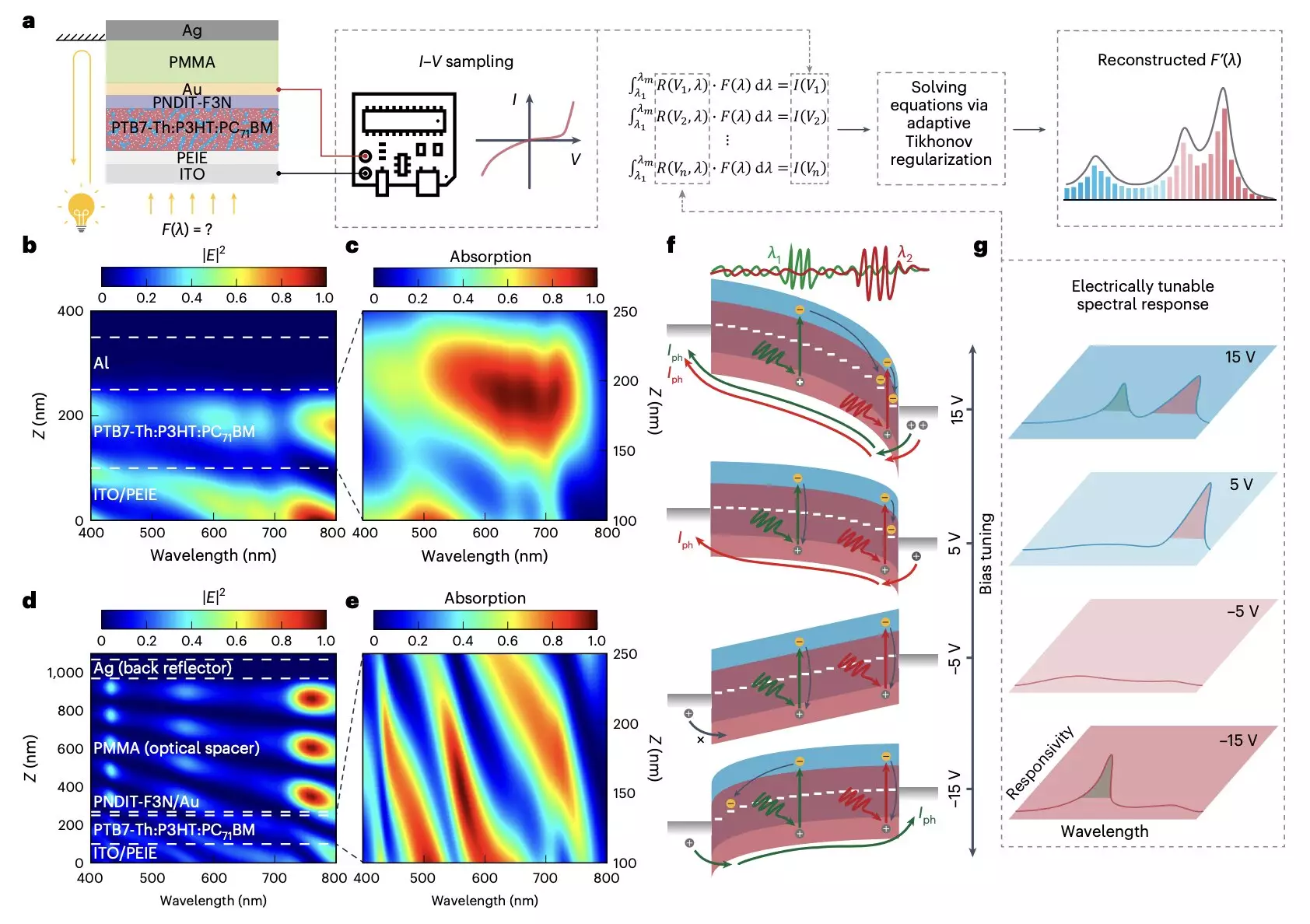

Traditional optical spectrometers have long been known for their versatility and ability to analyze light properties across the electromagnetic spectrum. However, these instruments are often bulky and expensive, limiting their practical applications to specialized facilities. The demand for compact and affordable optical spectrometers has spurred electronics engineers to explore new design concepts.
Researchers at the Chinese University of Hong Kong and other institutes in China have recently introduced a groundbreaking micro-sized optical spectrometer in a study published in Nature Electronics. This innovative device is based on an organic photodetector with a bias-tunable spectral response, offering a promising solution to the challenges faced by conventional spectrometers.
The newly developed optical spectrometer leverages a unique method to manipulate the wavelength-dependent location of photocarrier generation in photodiodes. By combining a trilayer contact with a Schottky diode and an organic ternary bulk heterojunction, the researchers created a photomultiplication-type organic photodetector (PM-OPD) with exceptional performance capabilities.
The miniaturized optical spectrometer exhibited remarkable efficiency in operating across the entire visible spectrum range with a sub-5-nm resolution. By conducting a series of rigorous tests, the researchers validated the device’s capabilities and further demonstrated its potential by fabricating an 8 x 8 spectroscopic sensor array for hyperspectral imaging.
The successful development of this micro-sized optical spectrometer opens up new opportunities for the advancement of portable, wearable, and cost-effective optical technologies. With the potential to inspire the creation of similar devices in the future, this breakthrough could pave the way for cutting-edge research and medical applications.
The introduction of the micro-sized optical spectrometer represents a significant leap forward in the field of spectroscopy. By challenging the conventional norms of spectrometer design and functionality, this innovative device offers a glimpse into a future where compact and affordable optical technologies can revolutionize research and medical practices.
Rogue waves have long been a subject of fascination and terror in maritime lore. These…
As the world grapples with public health challenges, especially those posed by infectious diseases, the…
The Sombrero Galaxy, also known as Messier 104, embodies a breathtaking blend of spirals and…
In recent advances in quantum electronics, a groundbreaking discovery leveraging the concept of kink states…
In the intricate tapestry of nature, ice often exists in a delicate balance with liquid…
In an astonishing event that captured global attention, a rogue object from beyond our Solar…
This website uses cookies.